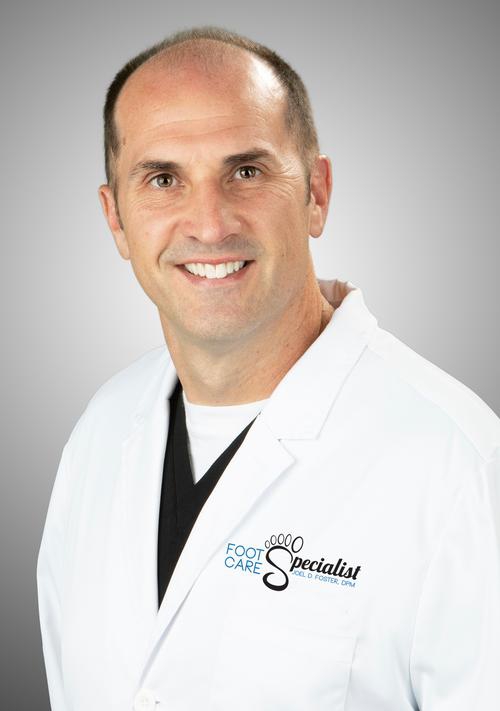Dr. Foster uses minimally invasive surgical procedures to offer new hope for patients with chronic toe ulcers. Minimally invasive surgery for toe ulcers focuses on addressing the root causes of the problem. This may involve:
- Correcting soft tissue deformities. Improving toe position can almost always be accomplished with only one or two 1-2 mm poke incisions to release tight tendons. This realignment of the toe will immediately remove pressure from the site of the wound.
- Correcting bone deformities. If pressure is not resolved with a soft tissue release, a similar 1-2 mm incision can be used to reach the bone in order to reposition the toe. This realignment of the bones will reduce pressure points that contribute to ulcer formation.
Compared to traditional open surgery, minimally invasive procedures typically result in quicker recovery times with significantly lower risk. While there are always risks involved with surgical procedures, the risks of using small pinpoint incisions that usually heal within 1-2 weeks are much lower than the risks of a wound that remains open for weeks, if not months on end. We cannot stress enough the importance of getting these toe wounds healed quickly in order to avoid additional complications.
The smaller incisions used in minimally invasive surgery also lead to less visible scarring. This aesthetic benefit can be particularly important for patients who are conscious about the appearance of their feet.
What to Expect From Your Treatment
If you have a new or chronic toe ulcer, your first visit with Dr. Foster will include a thorough evaluation of your condition. This includes a complete foot evaluation, examination of the ulcer, assessing blood flow, and considering underlying health issues that may affect treatment.
Based on the assessment, Dr. Foster will develop a tailored surgical plan. This will account for factors such as the location and severity of the ulcer, as well as your overall health and specific lifestyle needs.
Most procedures are done using only local anesthetic. This means to risk or downtime involved with general anesthesia. Dr. Foster and his team will answer any questions you might have about what to expect before the surgery is performed.
The surgery itself will be performed using specialized instruments and techniques that allow for small incisions. This approach minimizes trauma to surrounding tissues and promotes faster healing.
Dr. Foster may use advanced imaging technologies during the procedure to ensure precise treatment of the affected area. This level of accuracy is crucial for addressing the underlying causes of the ulcer effectively.
Post-Surgery Care and Recovery
Proper care of the surgical site is crucial for optimal healing. You will receive instructions on how to keep the area clean and protected during the recovery period. You’ll also be guided through a gradual return to your normal daily activities. This may involve wearing a special shoe for a brief period of time.
Dr. Foster may recommend certain lifestyle changes to support healing and prevent future ulcers. This could include dietary adjustments, smoking cessation, or improved foot care practices.
How Our Direct Care Model Helps You Control Health Care Costs
Minimally invasive surgery is often less expensive than traditional open surgery. However, our office uses a direct model of care that helps further reduce your health care expenses by avoiding the excessive charges that come from dealing with insurance companies. Our prices for all products and services are posted online, so you know exactly what your financial obligation will be.


